Nuestra Magia was released right when I needed it to. A Secret Lair drop released in English and Spanish from Wizards of the Coast and Magic: The Gathering, Nuestra Magia is a love letter to the Latino community. A print-to-order set, 50 percent of all proceeds went to the National Association of Latino Arts and Culture. Consisting of ten cards from eight different artists, the set was overseen by Art Director Ovidio Cartagena.
We asked Wizards of the Coast how much the Secret Lair drop had raised for NALAC for this interview. In an exclusive with But Why Tho?, they shared that there was “more than $1M raised with the final tally still being counted.”
We spoke to Ovidio Cartagena after the set’s launch to discuss the beauty of the set, its importance, and what it means to create a set inspired by cultures, histories, and people that are under attack right now. Which, as a Latina and Magic player, had a deep impact on me.
When I opened my Secret Lair drop, it felt like I was being seen for the first time in a while. When I interviewed Magic developers at Sumer Game Fest this year, it happened as the National Guard descended on Los Angeles, and the increased police presence at the show started to make me uneasy. Meanwhile, my mom was calling me constantly to make sure I was okay. Things haven’t gotten better since then.
But with Nuestra Magia, it was seeing representations of my people, my community, represented as beautiful and worthy. I know that this is the truth, and I’ve seldom been someone who needed something to buy to make me feel like I belong. But when you hear negativity and vitriol hurled toward your community nonstop, it starts to chip away at you. You start to feel smaller, and moments like this can help keep us from shrinking.
As I shared this with the Art Director, I asked how the set came to be, and more importantly, how it was a long time in the making. “Things come together in an interesting way in life, right? We tried to do a couple of versions of this [Secret Lair drop], but schedules didn’t align every single time. I was on a lot of projects—you know, I was on a lot of projects,” Cartagena joked, referencing our interviews for The Lost Caverns of Ixalan and Duskmourn sets.
Magic: The Gathering is giving back to its community by highlighting our indigenous past.
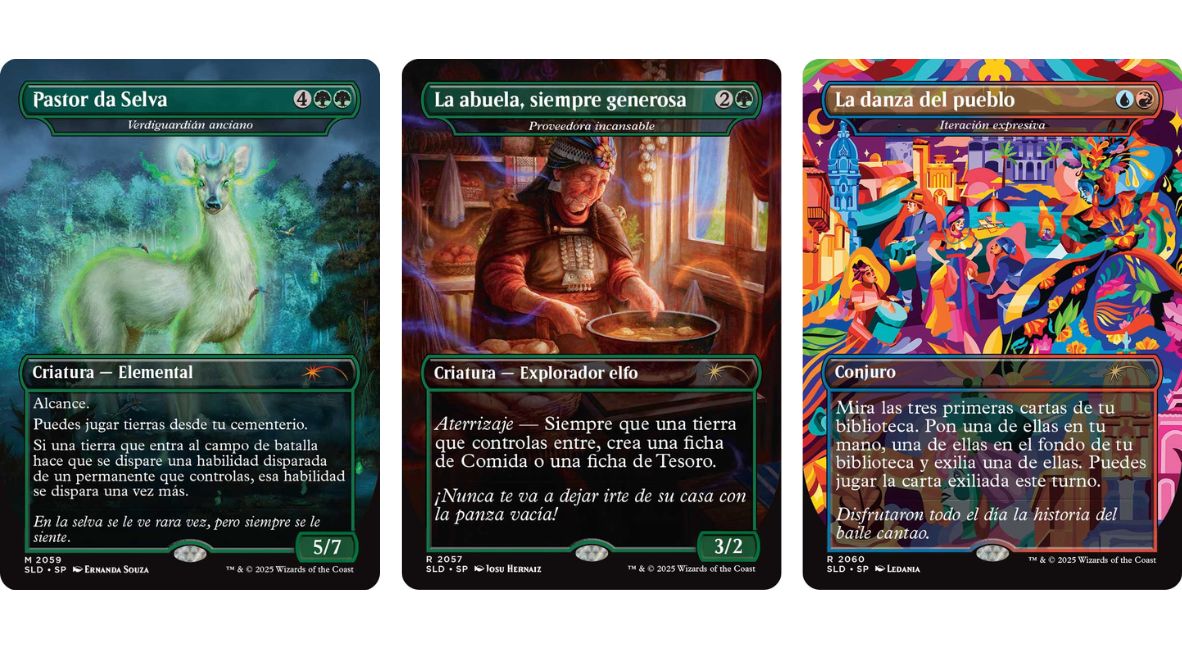
“We started a while ago, but we kept pushing it back, looking for the ideal release without knowing what the situation was going to be,” Cartagena continued, “When it finally came, it came at a time where I think people needed to see something like that.”
With only ten cards, Cartagena and his team had to find the best way to plan and work to represent the broad and diverse tapestry of Latin American experiences. He had to find the artists and make sure that the Secret Lair drop represented more than just one culture and one period of time in the region’s history, which spans thousands of years.
Cartagena began explaining the process behind bringing Nuestra Magia to life. “[Planning the set] was a lot of perspective. It was important to me that everyone on the project, everyone outside the project, everyone who was going to get this drop, knew that Latin America is not one thing. We [are seen as having] one language that the Spanish gave to us, but we were colonized, and that’s why we have that language in common. But we’re from many cultures. And aside from that, we have many languages, right? Just from my tiny corner of the world, Guatemala, I recognize K’iche and Nahuatl. That’s already just two of 30-something languages in the region that are still living languages, and that region is pretty small.”
He continued, “Now you go down to the rest of the continent, there’s just so much. So it was very tough on the cultural end. You have to do a lot of research on the personal end, like the people. Part of it is that you want to make sure you listen to everyone. You want to make sure that you have the right voices and that people who want to say the right things are involved. You want folks who are interested, because not everyone is interested in doing something like this, and they shouldn’t always be. Just because you are Latino, it doesn’t mean that now your job is to educate the world on [Latin America]. You should be able to just be yourself.”
After the important aside, he continued his explanation, “We bring some people in who really want to tell a story. We listened to a lot of people, some of whom helped to write the concepts of these… We have a lot of very individual, unique places in the drop, some things that span the content, and some things that don’t try to put as much as we could, but as much as you can. If I were to do a 400-card set based on Latin America, I would still leave stuff out because that’s how big it is. That’s how many people there are. That’s how many experiences, how many centuries of history there are. It’s incredible.”
Cartagena captures an important truth about the Latino community when he discusses curating Nuestra Magia. We’re not all the same. We’re from different places, with different languages, different experiences, and Latino representation doesn’t stop or start with just one thing. And that’s what made the set a reflection of us; it was varied. The set captures that. There were universal icons like the “Chancla relámpago” and the “Ya viene el coco” card (we called him the cucuy growing up, but the dark hallway was the same), illustrated by Babs Webb. But then there were indigenous stories on the cards too.

One card in particular brought tears to my eyes as soon as I read it: the Treasure token. It’s just a token, a card you use in Magic: The Gathering to represent Treasure, which can be tapped for mana in the game. But it was the card’s flavor text below the image, a young person in front of a wall filled with family portraits, that stuck with me “I suddenly realized when I saw the memories on the walls that I also carry them in my veins.”
While I wanted to ask about every card in the Secret Lair drop, I needed to know how the team came up with this one line, a line that reminds me of all the people before. A line that reminds me that I am connected to a thriving people and ancestors who didn’t break.
“I really have to shout out [Art Director] Anthony Garzzona, who commissioned all these pieces,” Ovidio Cartagena began. “When we were putting together the set, I worked with Anthony and said, ‘Every piece we make, let’s make sure that we have someone who is connected to the theme of the art.’ And I actually wrote all the briefs and the flavor text. Like that flavor text [on the treasure token]. I wrote the briefs and the flavor text on the bottom of each of these in English and Spanish.”
“In the case of the treasure token and La Abuela [siempre generosa], I remember having a long phone call. I was driving to some event in Seattle, and traffic was bad. I was like, I’m gonna call Josu [Hernaiz], who’s the artist, [for those cards]. He is from Chile, and I started telling him that there was going to be an opportunity where I think he can tell some more personal stories. Where he can put in some more personal things [into the set], and that I would like him to participate.
“In this case, we decided that Josu is going to [create] a Mapuche grandma, and he’s going to do the treasure token. I made these ideas deliberately vague for the grandma, because I wanted him to bring his life experiences and his take on art, but also wanted to include the treasure token. It was very clear to me from the beginning that it was not going to be about money, that it was not going to be about possessions,” he said.
Cartagena paused for a second before continuing, “I think I’ve had that moment many times in my life, without getting too personal. Many of us have gone through a lot of tragedy in Latin America because living under unstable political conditions is very surreal, and I realized that remembering your ancestors is a huge privilege, and that’s something that was taken from many of us.
“Not just that, but many of us were taught to deny our Indigenous ancestry. And for me, the process of realizing that this all lives in me gave me the idea to be like, ‘Okay, the real treasure is this whole legacy that I bring.’ The more I own it, the wiser I can become, the more I can help others, the more I can speak to my elders and my peers.”
It’s at this point in the interview that I can feel a lump rising in my throat. Ovidio is talking about his experience, but it also feels like he’s describing mine. How my family ripped out our indigenous identity in an attempt to survive, and how now we are all trying to find it again. How my mom and I are working to find her well’s tribal paperwork, and how we do it all without knowing if we can, but desperately knowing we want to come back to what was taken from us.
“When I thought of the concept, it was a way for me to say, ‘Don’t forget where you come from. Don’t forget who you are.'”

“They taught me to deny my ancestry,” he said. “But when I speak about [indigeneity], people are fascinated. People love who I am. When I thought of the concept, it was a way for me to say, ‘Don’t forget where you come from. Don’t forget who you are.’ And trust me, it’s not what the ads are asking you to be, it’s not what The Zeitgeist is telling you should be. It’s not the demands that consumerism makes of you. There’s a lot more you could be gaining a sense of meaning from. It’s kind of like against the current a little bit.”
He continued, “We’re taught that we’re individuals and that we make decisions for ourselves and so on. That’s probably why we make a lot of decisions in context, right? We have to enrich our context, and if we deny where we come from, we’re not going to accept that we won’t be accepted where we came from or where we’re going. We got to accept ourselves first. So that was kind of where [the treasure token’s flavor text] came from.”
Cartagena then moved from describing a more universal concept into speaking to what the card meant directly to him. “When that line was written, [I was] thinking of a very personal moment. I lost my father very young, and I didn’t know much about him. But I was hiking, and I had been walking for days on end in several cities in Europe, and I got to reflect on things. I started remembering a lot of instances where I was told how I behaved like [my dad] without knowing how he behaved, and that I carry him.”
“I learned from him, my grandfather, and my grandmother. My grandmother gave me so much; she is probably the most influential person in my life, and also, the reason I put the chancla in [the set]. Because they gave me a lot,” he said with a smile.
“I realized that I was carrying them with me all the time. They talk to me all the time. They talk through me. They just put so many words, so much wisdom in me that it just comes out. And who knows how old that wisdom is? I appreciate a lot what I was given. And that is a legacy, that is an inheritance, and that is a wealth. Of course, I was thinking of the way I phrased it, the veins. It was in my veins. I was thinking of Eduardo Galeano’s book, too. There’s a lot that goes into just one little card, right?” Cartagena said with a chuckle.
While the beauty of connection is displayed in the Treasure Token, Cartagena’s influence from Eduardo Galeano, a Uruguayan journalist, also captures the other side of it. As much as the card is about remembering who we are connected to and the riches that we hold within us, “veins” also captures what has been taken. Galeano coined the term “open veins” and has since become shorthand for describing how imperial powers have exploited and taken resources, wealth, and people from the region.
In Galeano’s words, “Latin America is the region of open veins. Everything from the discovery until our times, has always been transmuted into European–or later–United States– capital, and as such has accumulated on distant centers of power. Everything: the soil, its fruits and its mineral-rich depths, the people and their capacity to work and to consume, natural resources and human resources.”
“My biggest goal was to make [Nuestra Magia] feel as if you’re driving through Latin America.”

One line of flavor text on one card, and in it, the team captured the beauty and the tragedy of what it means to be connected to the region. But beyond this, the joy that Ovidio expressed as he talked about one card and one line of flavor text showcased how important and how big this set was. Not just because of how much of his own life he put in, or how much of the lives of the individual artists commissioned for the set he put in. But because of what each card and each line of text was able to bring out in the game’s players.
The Nuestra Magia Secret Lair drop may only be 10 cards, but the beauty and diversity among them are unmatched. Having just asked about one card, and a token at that, I asked Cartagena about the rest of the set. As the Art Director noted earlier in our conversations, the people of Latin America have centuries, if not thousands of years, of history. The drop is reflective of that. I asked how they decided to include MesoAmerican stories in the set, as well as others.
“As a Latino and as a creative, I started thinking, ‘Oh my god, there was so much I didn’t say. There was so much I wanted to include. There was so much.’ There is just so much that you want to represent, and you can’t put it all in, and it’s hard. There’s a big significance to things, and sometimes it’ll get lost because you’re releasing a lot of cards, and you’re gonna think like flavor,” he said.
“There was not a lot of chatter about a card that I commissioned, where Huatli is killing Vito in Ixalan, [Huatli’s Final Strike]. It was a great piece by Marta [Nael], and nobody talked about it. And that image links into like, 600 years of history! I think I could write an essay on Marta’s piece! But it just happens, right? There’s so much you want to put in a set that there are a lot of ideas that don’t come together at the right time, or that are not the best for the release.”
He continued, coming back to the Nuestra Magia set, “My biggest goal was to make [Nuestra Magia] feel as if you’re driving through Latin America and seeing all the things [that are there]. You see pyramids. You see salespeople. You see a lot of people offering you stuff. You see buildings. You see different faces, a lot of different faces, and different languages, different slangs, so many things when you travel around, and so the first choice is talking to as many people as you have around you. Because my experience is not your experience, even though we’re all Latinos, I can’t speak for you. You can’t speak for me, and I can’t speak for a bunch of others. We need to bring as many voices as we can [into projects].”

“Then there is also the matter of finding the best cards for the theme and the release,” he continued. “That’s a big factor. We want to do what’s right for fans, and also find the right themes. Right now, I’m still like, I should have done this or I should have done that. There are a lot of choices that I think I could have made, or that I had to make, just a bunch of hard choices. It’s a complex and long process. And you have to talk to the managers too. You have to talk to the people who have to put together a lot of Secret Lair drops, right? Because they know what’s going to work for this. And I have to listen to everyone.”
After explaining a high-level look at the process of choosing themes for each card, Cartagena switched his focus to highlighting the cards that made it in and what they meant. The first of which was “La Abundancia de Yucaú,” a card inspired by the indigenous people of Puerto Rico.
“The Taíno card,” he started, “That card was a whole journey in itself, and it’s very important, because [the Taíno] were the first people who encountered the colonizers, and they’ve been denied for a long time. So there are a lot of factors going into this. You end up with a mix of things. And there are things you have to leave on the cutting room floor, not because they’re bad, but because you have a limited amount of space. There’s a limited amount of stories you can tell.”
“For example, the baile cantao, you know, ‘La danza del pueblo’, is a Colombian theme, and we’re coding it as such. And we found the right person, [Ledania]. I try to do it as much as I can, and when I find opportunities for people to tell their own story. It always gives me a good result. When I talk to an artist and say, ‘Just tell your story. Here’s where you can jump from, make it yours, give me what you feel.’ It invariably always makes something cool,” he said.
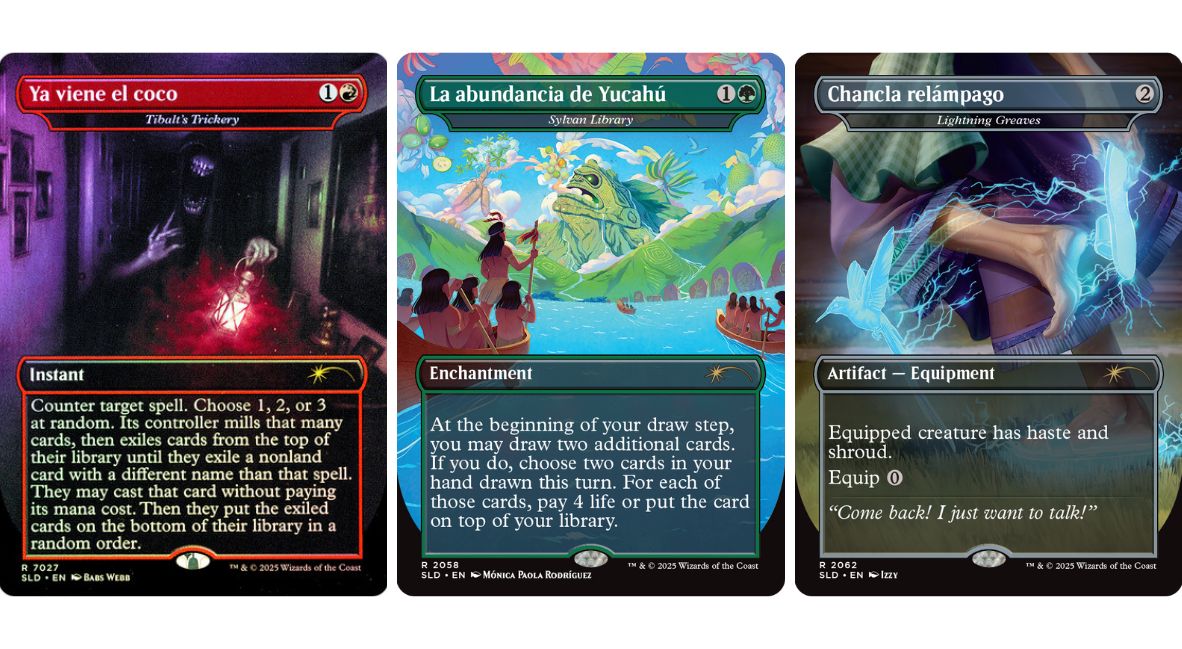
For Ovidio Cartagena, working on sets like this Secret Lair drop or Ixalan, or other sets that aren’t directly connected to Latin America, are all opportunities to tell people’s stories, and that comes through. It’s also what makes Wizard’s choice to work with the National Association of Latino Arts and Culture all the more important.
“I wholeheartedly believe in what [NALAC is] about. I’ve always been involved in some way or another with different nonprofits, both professionally and personally. It was really exciting to get to contribute to this [initiative], and it gives you an extra drive to try harder, right? This is going to go to a good cause. You know, this is going to benefit a lot of people who need it, especially now,” he said.
“So the process of working on this was very influenced by the motivation of having some action behind the words, and behind the aesthetics. Because the aesthetics are our delivery for content, right? The context that’s being carried by aesthetics, you can summarize the content context or synthesize it, but this time, we were acting as well; it’s not just narrative. So that was good to do. Actually, recently I got a message congratulating me for the work on that, because it has raised quite a bit, and I was very glad about that.”
Ovidio Cartagena shared a lot of himself in curating the Nuestra Magia Secret Lair set. But he also learned about himself, too. “The first thing I learned is that I didn’t know as much about Latin America as I thought! The process was learning a lot about people. Something that I’ve progressively learned with each project and with this one more than most is how to be a listener and how to put myself in other shoes. I’ve also learned how just to step aside and let people tell their stories, let them bring their context as different as it might be from my own.”
“I think the process of art direction has helped me [learn] a lot about that too, because people have different styles. And I’m an artist, so it’s very hard to keep my personal taste away from someone’s style… So it’s the same here. I wasn’t trying to reframe anyone’s story. For example, the card that features Sué of the Muisca, Sol Ring. Did you see the moon in the lake?” He asked, referencing the card illustrated by Izzy. To which I said yes, excited to see Colombia’s indigenous mythology represented in the set. The moon in the lake depicted on the card tells the story of the Muisca sun god, Sué, who married the moon goddess Chía.
“As I said, that’s not my story. You really have to open up,” he added. “You can’t put a story onto someone. You really need to just take it in. And that process takes at least half a lifetime to realize; it takes a long time to come up with those conclusions that it’s not about you, right? You really have to pay attention to other people, and it’s hard, especially being an artist, trying to find little ways where you can make it yours somehow.”
“I wanted fans to make [Nuestra Magia] theirs. I wanted people to see this and not necessarily, as opposed to other projects that I’ve done, see my vision, but instead, be able to project their story here. Be able to see things that they had never seen in a game before. We don’t know when the next chance is to get into the game, but I can tell you, I’m definitely always on the lookout, striving to see where I can put more representation.”
Nuestra Magia is a love letter to our ancestors and our future.
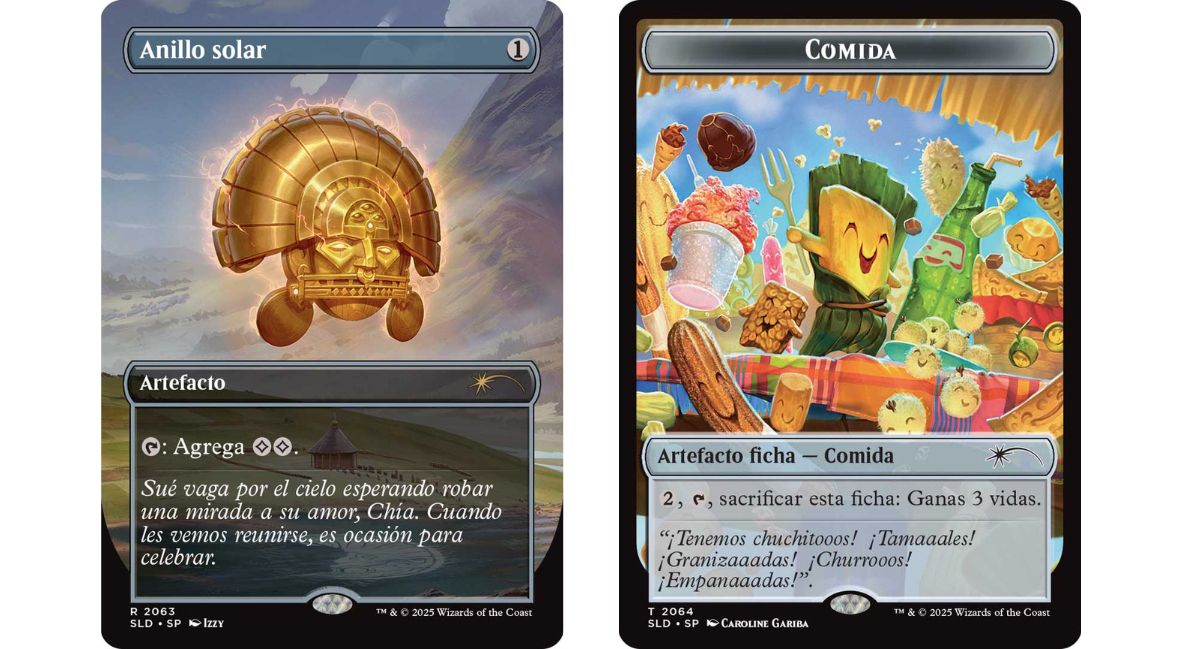
But one of the most beautiful things about talking with Ovidio Cartagena was that it wasn’t just about Latinidad, and identity shaped by imperialism or mestizaje. For him, it was about calling to our indigenous ancestors and ensuring that they are no longer ignored. That we aren’t ignored.
“Indigenous peoples have been poorly served by history, and I think we all owe it to them,” Cartagena explained as the interview came full circle. “They invented many of the things that we still use, not just concepts, but food and political organizations. There are so many things, so much wisdom, that we’ve gotten from the abuelos, that we owe it to them to keep striving, to keep their traditions alive, because they’re not here [anymore]. They’re ours too. We carry it.”
“I’m so far from where I grew up,” he said. “I hate to say that I realized that more once I was here, that when I go back to Guatemala all the time, I try to find more opportunities to interact with stuff that [I took] for granted when I was in the middle of it. I think, ‘Oh, my God, I could have soaked this up more,’ and I think it’s a lifelong thing, but I hope [Nuestra Magia] inspires others to do that too. I hope others want to feel connected like that, to their legacy, because it’s a big inheritance that we shouldn’t leave on the table.”
I’ve done a lot of crying this year, but right now, it’s because I’m happy.



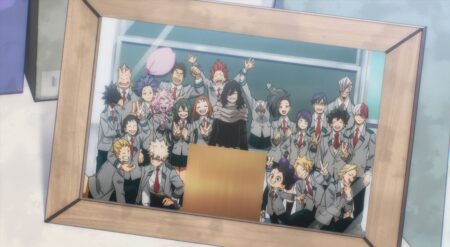
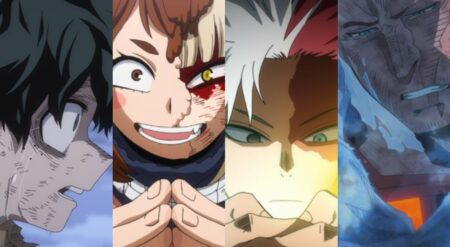
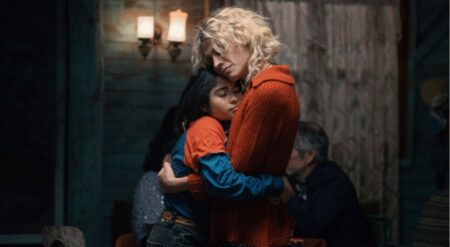

![[EXCLUSIVE] ‘Invincible VS’ Devs Dive Deep Into Their New Original Character: Ella Mental Ella Mental in Invincible VS](https://butwhytho.net/wp-content/uploads/2025/12/Invincible-VS-Ella-Mental-But-Why-Tho-1-450x247.jpg)